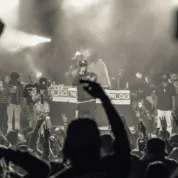
Hip hop may have found its roots in the 70s and 80s, but it was the 90s that catapulted it into global spotlight. It was a transformative decade for an irresistible new sound, that today impacts music worldwide.
Hip hop in the 1990s experienced a fusion of young talent from the East Coast to the West. DJs reinvented themselves with breakbeats and jazz samples, while the Dirty South and hardcore enthusiasts embraced the new sound, finding creative ways to make it their own.
This is the story of the 50 best 90s hip hop artists, and how they shaped a new genre that redefined the music industry. Make sure to also check out our Top 20 Rappers of All Time by pop-culture critic and TikTok influencer Ted the Toy Collector.
What is Hip Hop?
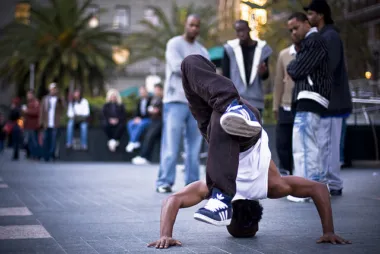
Hip Hop isn't just music; it's a cultural movement that emerged in the Bronx, New York City, in the late 1970s. In addition to music, it encompasses breakdancing, graffiti, fashion, and DJing. By the 1990s, it had become a global phenomenon, with new artists from the East Coast, West Coast, and Atlanta, GA, bringing it to fans worldwide.
This period is often called the "Golden Age of Hip Hop," featuring some of the best 90s hip hop artists who were pivotal in shaping its sound and making it a vehicle for social, political, and cultural expression.
Rap vs Hip Hop, What's the Difference?
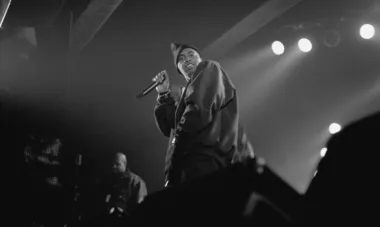
Rap and hip hop are often used interchangeably, but they're not exactly the same. Rap is a vocal style that involves spoken word and rhyme, and it is one of the main elements of hip hop.
Hip hop however, is a much broader music genre and cultural movement, that encompasses rap, DJing, dancing, fashion, and even graffiti art. The best 90s hip hop artists were masters of both rap and the broader scope of hip hop, and were the driving force behind its complexity, creativity, and richness.
50 Best 90s Hip Hop Artists

The 1990s featured an explosion of young talent that tested and expanded the new genre in multiple ways. They made sure this new sound wasn't just a stateside phenomenon, and reverberated their beats and rhymes across the globe.
This article isn't a ranking; it tells their stories and the history of hip hop's migration from east to west. Far more than 50 hip hop artists made contributions during this time. These are the 50 best hip hop artists that made our list. Make sure to comment below to let us know who you would have included, and check out Part 2 of this 2-part series on the top 100 hip hop songs of the 90s.
The Pioneers of Hip Hop
The 90s are considered the "Golden Age of Hip Hop", because during this time the sound matured, while producing a multitude of iconic albums and hits. But none of this could have happened without the groundbreaking work done in the late 70s and 80s.
A new turntable technique to extend breakbeats was being pioneered by DJ Kool Herc in the mid-70s, to create longer and more energetic dance periods. Grandmaster Flash and the Furious Five, took this technique into South Bronx clubs and block parties, while also adding lyrical storytelling. The result was a fun, highly danceable new sound, that captivated the ears of everyone who heard it.

By the early 80s, other groups were formalizing Herc and Flashes techniques, with Run-D.M.C. and Beastie Boys in particular breaking into mainstream music. Each one incorporated their unique styles, varying from rock-infused tracks to classic boom-bap. LL Cool J introduced a softer side to hip hop, while Public Enemy came hard onto the scene with a political message centered on issues of systemic racism. The hip hop industry's formative years were underway, primarily governed by independent labels like Def Jam Records and Sugar Hill Records. A few of these early pioneers continued well into the 90s and beyond.
Run-D.M.C. (1984-2001)
They are the primary group that brought hip hop into mainstream culture. And they did it musically, and in fashion. Their crossover success made them one of the first hip hop acts to receive widespread media attention.
LL Cool J (1985-2013)
He was a romantic from early on, blending hip hop with elements of pop and R&B. His influence extends to both music and acting, setting the stage for hip hop artists to venture into other forms of entertainment.
Beastie Boys (1986-2011)
Originally a punk band, Beastie Boys were known for their fusion of rock and hip hop, opening doors for genre-blending in the industry. They're central figures among the best 90s hip hop artists, due to their unique skillsets that helped popularize hip hop among diverse audiences.
Eric B. & Rakim (1987-1992)
One of the first to redefine rap lyricism and DJing, elevating the art form's complexity. They shifted the focus from simple rhymes to intricate lyricism, influencing a generation of emcees.
Public Enemy (1987-Present)
Known for their politically charged lyrics and activism. Public Enemy's controversial stance on social issues quickly turned them into one of the genre's most thought-provoking acts.
Best East Coast Rappers

You can't talk about the best 90s hip hop artists, without talking about New York City. That is where it all started, with a string of influential new artists. KRS-One and Public Enemy remained message-centric, with newcomers like Gang Starr, Wu-Tang Clan, and the Notorious BIG introducing new beats and complex sampling and lyricism. Nas debuted in the 90s, his lyrics embodying the struggles and stories of New York life. Labels like Bad Boy Records emerged, and fashion styles like Jyncos, baggy jeans and Timberland boots became synonymous with the East Coast scene.
KRS-One (1987-Present)
As a pivotal figure in the 90s, he used his lyricism to educate and raise political awareness. His sound fused reggae and rap, solidifying him as one of the best 90s hip hop artists.
Gang Starr (1989-2019)
A collaboration between DJ Premier and Guru, their jazz-infused beats and profound lyricism are revered in hip hop circles. They gave 90s hip hop a conscious, intellectual layer.
Leaders of the New School (1991-1993)
Known for their high-energy performances and humorous lyrics, they made a splash in the early 90s. The group also served as a launching pad for Busta Rhymes's solo career.
Wu-Tang Clan (1993-Present)
Combining martial arts themes with gritty, urban storytelling, they redefined what a rap collective could be. By launching the careers of individual members, they exhibited unprecedented group dynamics.
Das EFX (1992-2003)
They became famous for their unique "sewa' style," which incorporated nonsensical syllables in their lyrics. The duo's impact can be felt in the way they influenced an entire generation of lyricists in the 90s.
Diamond D (1992-Present)
As a founding member of the Diggin' in the Crates Crew, his work as a DJ and producer left an indelible mark. His jazz-infused beats contributed to the unique sound that made him one of the best 90s hip hop artists.
Craig Mack (1994-2017)
Best known for his hit "Flava in Ya Ear," he was the first artist to release music under Puff Daddy's Bad Boy label. However, he chose a path of religious devotion later in his life, largely stepping away from the music scene.
Nas (1994-Present)
With "Illmatic," he captured the complexities of life in the Queensbridge projects like no other. As one of the best 90s hip hop artists, Nas' lyricism and storytelling have made him one of the top 20 old school rappers from the 90s, according to most Hip Hop fans.
Best West Coast Rappers
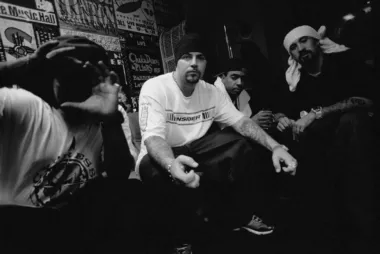
With just a few years under its belt, hip hop quickly spread across the USA, largely due to the national reach of MTV music video culture in the 80s and 90s. Artists in Los Angeles immediately began experimenting with the new sound.
One instrumental, yet often overlooked early contributor was Digital Underground, who not only exploded onto the pop and R&B charts in 1990 with "The Humpty Dance", but also launched the career of Tupac Shakur. Making his debut with them as a member in 1991 on their single "Same Song", Tupac would go on to become one of the West Coast's most legendary 90s rappers.
West Coast artists like Tupac brought a different perspective from NYC 90s rappers. Unlike their East Coast counterparts who often emphasized storytelling and lyrical prowess, West Coast 90s rappers spoke about local issues in Compton and South Central LA.
Cypress Hill found mainstream success rapping about Latino culture and cannabis use, while N.W.A., Ice Cube, and Snoop Dogg talked about social injustices, and the stark realities of gang life.
This divergence from NYC hip hop led to the infamous East Coast-West Coast feud. Started largely due to business disagreements and fueled by diss tracks, the rivalry pitted labels and artists against each other, most notably Tupac Shakur from the West and Notorious B.I.G. from the East.
Digital Underground (1990-2008)
Known for their playful and funky approach, they became famous for hits like "The Humpty Dance." The group also introduced Tupac Shakur to the mainstream on their single 'Same Song', serving as a launching pad for his legendary career.
Cypress Hill (1991-Present)
One of West Coast hip hop's earliest rap groups, took the narrative about marijuana and Latino culture to mainstream America. Their upbeat, funky sound, featuring DJ Muggs' unique beats, became a favorite in 90s hip hop.
DJ Quik (1991-Present)
Renowned for his production skills, he contributed a funky and soulful sound to the West Coast rap scene. His DIY approach to producing and rapping made him a respected figure in the industry.
Snoop Dogg (1993-Present)
Rising to fame under Dr. Dre's tutelage, his laid-back style and smooth flow became iconic. In addition to becoming one of the top 20 old school rappers from the 90s, he's also become a pop culture staple, delving into TV shows, cooking, and even gospel music.
Coolio (1994-2009)
Famed for "Gangsta's Paradise," he blended soulful samples with hard-hitting beats. While his mainstream success was brief, the song became a cultural phenomenon, defining the mid-90s hip hop scene.
Luniz (1995-Present)
Exploded onto the scene with "I Got 5 on It," a song that became an anthem for cannabis culture. Despite their one-hit-wonder status, the track remains iconic in the hip hop community.
Best Gangsta Rappers
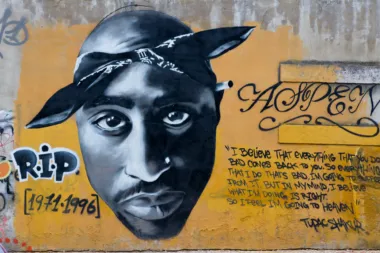
Gangsta Rap shot out of the West Coast hip hop scene like a bullet, intensifying the East-West rivalry that had been simmering. Artists like N.W.A. and Ice-T didn't just rap; they reported from the front lines of America's neglected neighborhoods.
The social issues they touched upon caused uproar, and the genre found itself a topic of national debate. But as much as it was controversial, Gangsta Rap was the lifeblood of a community yearning to be heard.
The diss track feud and messages of violence at the center of gangsta rap, tragically came full-circle with the deaths of Tupac Shakur in 1996, and Notorious B.I.G. in 1997. Both were killed in drive-by shootings, casting a grim shadow over the hip hop community.
But amidst the turmoil, Conscious hip hop emerged as an alternative, not to disregard Gangsta Rap, but aiming to educate and provoke thought about social issues without glorifying violence. Artists like KRS-One and Public Enemy led this charge, embodying a different ethos in the ever-evolving hip hop landscape.
N.W.A. (1988-1991)
Known for popularizing gangsta rap, they opened the floodgates for uncensored dialogues about urban strife. Censorship battles and FBI warnings only fueled their ascent as one of the best 90s hip hop artists.
Geto Boys (1989-2005)
One of the earliest groups to bring horror-core rap into the mainstream, their raw storytelling was both unsettling and compelling. Highly controversial for their graphic lyrics, they nonetheless paved the way for Southern hip hop.
Ice Cube (1990-Present)
A top 20 rapper of all time in our recent ranking. Ice Cube went from an N.W.A. member to a successful solo artist, his work is filled with socio-political commentary. He’s not just an artist but a powerful cultural figure, having moved from music to a successful acting career.
Tupac Shakur (1991-1996)
Perhaps one of the most iconic 90s old school rappers of all time, Tupac's (aka 2Pac) music tackled issues like racial inequality, poverty, and violence. His life and career were cut short in a tragic shooting, but his influence as one of the best 90s hip hop artists is indelible.
Notorious B.I.G. (1994-1997)
Rising from the streets of Brooklyn, his storytelling and lyrical prowess were unparalleled. His life, like that of his West Coast rival Tupac, ended in a tragic shooting, creating an eternal debate about who was the greatest rapper of the era, with both undoubtedly among the top 90s rappers to ever grace the mic..
Puff Daddy (1997-Present)
Not just an old school rapper from the 90s, but a producer and mogul, he brought a flashy, glamorous style to hip hop. Known for hits like "I'll Be Missing You," his Bad Boy Records played a big role in shaping 90s hip hop.
Native Tongues

The Native Tongues collective emerged in the late 80s as a fresh contrast to the rising tide of gangsta rap. It originated with the Jungle Brothers after the success of their 1988 album "Straight Out the Jungle," with other early members Monie Love and Queen Latifah joining as well.
These artists infused hip hop with relaxed and laid back samples, and more playful, less socially-charged lyrics. But it was A Tribe Called Quest and De La Soul that joined the movement and took it to new heights, by releasing iconic albums in 1989 and 1990 that emphasized peace, intellectualism, and Afrocentric themes.
The Native Tongue Family wasn't just about music; they were a cultural phenomenon. Their impact is often understated, as their sound and style rippled through the 90s, influencing a plethora of new groups mentioned in the following sections. They are the artists that are most responsible for the sound that is commonly associated with 90s hip hop.
Jungle Brothers (1988-Present)
A key part of the Native Tongues collective, their sound mixed Afrocentric themes with jazz and house music. They played a crucial role in the evolution of alternative hip hop.
De La Soul (1989-Present)
Best known for pioneering the "D.A.I.S.Y. Age" with their eclectic, alternative approach to hip hop. Their debut album "3 Feet High and Rising" is considered a seminal work in the genre.
Queen Latifah (1989-2009)
One of the first female MCs to achieve mainstream success, she’s known for her feminist anthems. Besides music, she has an extensive career in acting and television.
A Tribe Called Quest (1990-2016)
Helped lay the foundations for alternative rap with their innovative mix of jazz, funk, and socially conscious lyrics. Their 1991 album "The Low End Theory" is often cited as one of hip hop's finest.
Black Sheep (1991-2006)
Known for their playful lyrics and jazz-influenced beats, they're a standout in the Native Tongues movement. Their hit "The Choice Is Yours" is considered one of hip hop’s most memorable tracks.
Best Jazz Rap and Alternative Hip Hop Artists
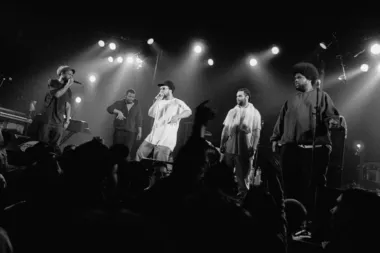
The Native Tongue's fusion of jazz samples with hip hop elements paved the way for a new genre of jazz rap, as well as alternative hip hop, which saw artists continuing to stretch the boundaries of hip hop even further. The mid-90s attempted to side-step the violent gang-centric rap that had been prevalent.
The Native Tongues and specifically A Tribe Called Quest, were instrumental in getting fans onboard with this shift. While new groups like Digable Planets and Pharcyde cemented it, with jazz samples and playful lyrics becoming a hip hop staple.
Others like Redman mesmerized listeners with new intricate rhyming schemes, while the musically educated members of Freestyle Fellowship brought Jazz rhythms into their lyrical patterns.
Freestyle Fellowship (1991-2014)
Pioneers of the jazz-rap subgenre, their lyrical dexterity and complex rhymes were groundbreaking. Not chart-toppers, but their influence on underground hip hop is unquestionable.
House of Pain (1992-1996)
Best known for the iconic hit "Jump Around," they brought Irish-American flavor to hip hop. Though short-lived, they left an enduring mark on 90s hip hop.
Pharcyde (1992-2004)
Introduced a fresh, playful vibe to West Coast rap, steering away from the prevailing gangsta rap themes. Their debut album, "Bizarre Ride II the Pharcyde," is a staple among the best 90s hip hop artists.
Redman (1992-Present)
Notable for his collaboration with Method Man and for his gritty, humor-infused lyrics. One of the most consistent 90s rappers in the game, maintaining relevance across decades.
Funkdoobiest (1993-1995)
Part of the Soul Assassins collective, they’re best known for their Latin funk-influenced sound. Their career was brief but impactful, especially in the West Coast scene.
Digable Planets (1993-2005)
Fusing jazz and rap in a way that was both commercial and artistic, they gained fame with "Rebirth of Slick." They are revered for their socially conscious themes.
Fugees (1994-1996)
Blending rap with soul and reggae, they achieved massive success with the album "The Score." Known for hits like "Killing Me Softly," they disbanded at their peak, making them a legendary but short-lived group.
The Roots (1994-Present)
Unique for their use of live instruments, they brought a jazzy, improvisational style to hip hop. They have continued to innovate, becoming the house band for "The Tonight Show Starring Jimmy Fallon."
Busta Rhymes (1996-Present)
Known for his intricate raps and energetic performance style. His rapid-fire lyrical flow has made him one of the best 90s hip hop artists, and his influence continues to this day.
Best G-Funk Rappers

But the East wasn't the only coast innovating. As Gangsta Rap intensified the coast-to-coast animosity, Dr. Dre offered a smoother, almost hypnotic alternative with G-Funk. Still anchored in West Coast culture and emerging from the same neighborhoods that produced Gangsta Rap, G-Funk offered a different narrative.
With influences from '70s funk music, G-Funk was sunny but not without its shadows, reflecting the complexities of West Coast life. It almost acted as a peace offering in the midst of the ongoing feud, demonstrating that even within a single coast, the sounds could be as diverse as the stories they told.
Dr. Dre (1992-Present)
A key figure in popularizing the G-Funk subgenre, his production work has shaped modern hip hop. His album "The Chronic" is one of the most influential albums in the genre.
Snoop Dogg (1993-Present)
A shoo-in on any old school rappers 90s list, including our Top 20 Rappers of All Time. An undisputed icon in G-Funk and hip hop at large, his laid-back style and distinctive vocal drawl have made him a pop culture staple. He’s moved beyond music, becoming a genuine multimedia mogul.
Warren G & Nate Dogg (1994-1998)
Key figures in the G-Funk scene, they're most famous for the hit "Regulate." Their smooth, laid-back style made them a staple in 90s hip hop.
Dungeon Family Members
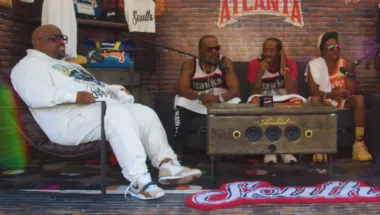
Meanwhile, something was brewing in the 'Dirty South' of Atlanta, Georgia, far removed from the hip hop epicenters of NYC and California. Atlanta teenagers going by code names like "Big Boi", Lisa "Left Eye" Lopes, and CeeLo Green were congregating in the basement of a home owned by Rico Wade's mother.
In attempt to help keep the kids off the streets, Wade's mother allowed them to turn her basement into a makeshift music studio. The dark and dank spot was nicknamed "The Dungeon", and became a creative haven where OutKast, Goodie Mob, and TLC were formed, as well as some of their initial tracks.
Marked by the slurred accent of Southern speech and the soulful music of local churches, The Dungeon Family's Southern experience presented a different narrative in stark contrast to the gritty realities of East and West Coast 90s rappers. They blended southern music, with funk, soul, and gospel into their tracks, creating something irresistibly unique. The sound challenged NY and LA for the dominance of hip hop, further diversifying the hip hop scene, and disrupting the East-West Coast stronghold on the charts. Their meteoric rise punctuated by hits like OutKast's "Elevators" and Goodie Mob's "Cell Therapy", made a bold claim that the South, with its distinct culture and Southern drawl, had a legitimate claim as one of the best 90s hip hop artists.
OutKast (1994-2006)
The duo of Big Boi and Andre 3000, one of our top 20 rappers of all time, together pushed the boundaries of hip hop with a blend of funk, soul, and even psychedelia. Albums like "Stankonia" showcase their innovative approach.
Goodie Mob (1995-Present)
Part of The Dungeon Family, they’re known for coining the term "Dirty South." Their music tackles social and political issues, especially on their debut "Soul Food."
Organized Noize (1995-Present)
The production trio behind The Dungeon Family, they played a significant role in shaping the sound of Southern hip hop. Known for producing hits like TLC's "Waterfalls" alongside their work with OutKast and Goodie Mob.
Best Hardcore and Rock Rap Rappers
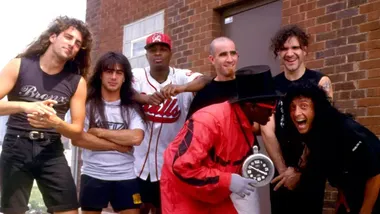
Throughout hip hop's meteoric rise during the 90s, rock and roll was going through an evolution of its own. Punk and hard rock were giving way to grunge and alternative rock, with many new bands louder and edgier than ever before. With hip hop acting as a breeding ground for creativity and experimentation, it was only a matter of time before the two collided.
Aerosmith and Run-DMC attempted it as early as 1986, with a somewhat gimmicky rendition of "Walk This Way". But the ultimate trend setter was Public Enemy's collaboration with thrash metal band Anthrax on 'Bring the Noise' in 1991, which rammed together a bold fusion of heavy guitar riffs and punchy rap lyrics.
Other hip hop artists adopted the intensity and rebellious spirit of rock into traditional hip hop production. Hardcore Rap emerged, with artists like Wu-Tang Clan and Mobb Deep at the forefront, turning up the aggression of traditional hip hop, with harder, heavy-hitting beats and gritty lyrics. The sound was raw, minimalistic, and unforgiving, often with every track like a gut punch.
Mobb Deep (1993-2014)
Known for their grim, brutally honest portraits of life in Queensbridge, they epitomize East Coast hardcore rap. Their 1995 album "The Infamous" is a landmark in the genre.
Missy Elliot (1997-Present)
One of the top 20 rappers of all time in our ranking by Ted the Toy Collector. Missy Elliot is a multi-faceted artist known for her innovative music videos and unique style of rap. She broke gender barriers in a male-dominated industry, becoming one of the most successful female rap artists.
DMX (1998-2021)
Another old school 90s rapper from our TikTok influencer's top 20 rappers ranking. DMX was a defining voice in hardcore rap, his raspy voice and dark themes captured the complexities of street life. His untimely death in 2021 added a tragic end to a turbulent life.
But the Beastie Boys who had been around since the beginning and witnessed it all, were perhaps most influential in merging the two genres. Originally a NYC punk band in the early 80s, they fell in love with hip hop during its formative years, becoming pioneers in it alongside Run-DMC.
This dual background gave them the unique versatility to switch between live instruments and DJ-driven songs during shows, and to blend rock instrumentation with hip hop beats and samples during production.
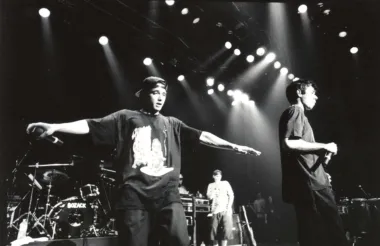
The movie Judgement Night" in 1993 paired multiple hip hop artists with rock artists for an entire soundtrack of rap rock collaborations, such as Helmet and House of Pain, Biohazard and Onyx, Slayer and Ice-T, Cypress Hill and Pearl Jam, and many more.
These collaborations and crossovers drew the attention of many unlikely hip hop fans, bridging a cultural gap, and laying the groundwork for a new rap rock genre, that bands like 311 and Rage Against the Machine would center their entire careers around.
The New Millennium and Beyond

The innovative styles and diverse sounds that emerged from the 90s, set the stage for a new wave of artists like Eminem, Missy Elliott, and Jay-Z to dominate the 2000s. They got their start in the late 90s, standing on the shoulders of giants, and leveraged it to dominate the new millennium.
Jay-Z (1996-Present)
Breaking into the mainstream with "Reasonable Doubt," he combined a hustler's ambition with a wordsmith's craft. His business ventures and long-lasting influence make him a standout figure in not just 90s hip hop, but a top 20 rapper of all time.
Eminem (1998-2021)
He burst onto the scene in the late 90s, showcasing lyrical dexterity and provocative themes that drew from the foundations laid by the 90s titans in this article. His unfiltered storytelling and complex rhymes bridged the gap between decades, allowing him to conquer the 2000s and become one of the most influential old school rappers from the 90s.
The 2000s had plenty of its own iconic moments, but the raw creativity and cultural shifts initiated in the 90s remained unparalleled. As we continue to see the influence the best 90s hip- hop artists had on today's music, it's hard to imagine hip hop in any other decade ever truly living up to it. Perhaps that's why they call it the "Golden Age of Hip Hop".
If you enjoyed this article on the 50 best 90s hip hop artist, make sure to also check out the 2nd part of this 2-Part series, on the top 100 hip hop songs of the 90s. And drop a comment below to let us know who's in your favorite 90s hip hop artists list.


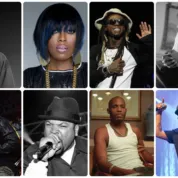
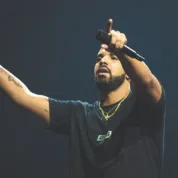

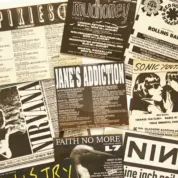

Leave a Reply!
90s Hip Hop should also consider Naughty by Nature Onyx and Bone Thugs. nobody knew Em til 99
Jay z.
I noticed you didn't have MC SHEN
...you mean MC SHAN!?!?
Because MC SHEN don't exist!
no beef on this list, but outkast is the goat
How bout hte Coup, Alkoholics, Bizmarkee So many I could name a hundred. Not this mumble rap crap today.
De la, pharcyde, you covered them all!